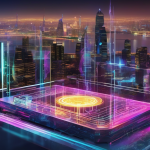How 5G is Improving Mobile App Performance
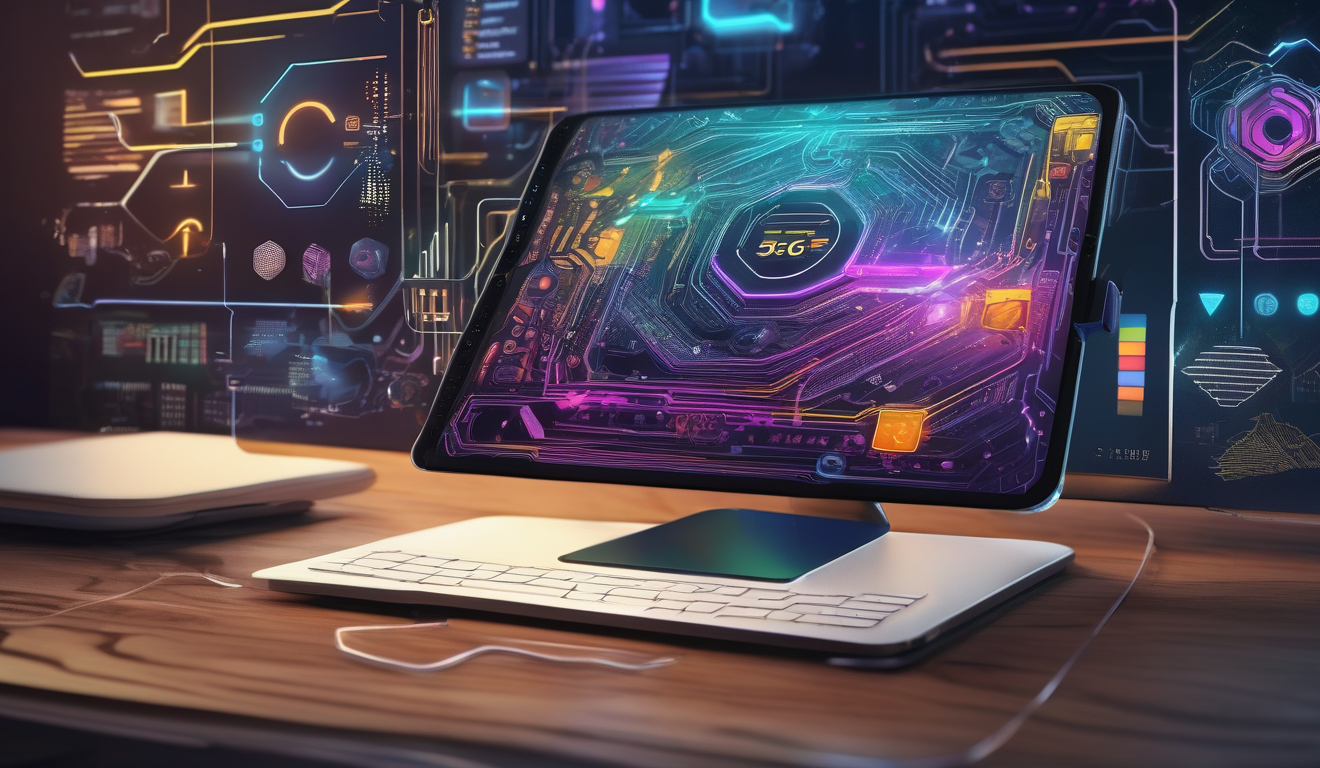
In the fast-paced world of technology, 5G is not just a buzzword; it’s a game-changer that’s transforming how mobile applications operate. Imagine downloading an entire movie in seconds or engaging in a multiplayer gaming session without any lag—sounds amazing, right? This leap in technology is all about enhancing speed, connectivity, and the overall user experience, which is crucial for keeping users engaged and satisfied.
One of the most remarkable features of 5G is its ability to offer unprecedented download and upload speeds. With speeds reaching up to 10 Gbps, mobile apps can now transfer data in the blink of an eye. This means that whether you’re streaming high-definition videos or participating in real-time video calls, the experience is smoother than ever. The drastic reduction in latency—down to just 1 millisecond—allows for instantaneous interactions, making apps more responsive and user-friendly.
5G technology doesn’t just enhance speed; it also significantly increases connectivity. Picture a world where thousands of devices can connect simultaneously without any hiccups. This is not just a dream; it’s the reality that 5G brings. With its ability to support a massive number of connected devices, 5G is paving the way for the Internet of Things (IoT), enabling smart homes, wearables, and other connected devices to communicate seamlessly.
The integration of 5G with IoT devices is revolutionizing app performance. With faster data transmission, apps can now provide real-time updates and insights. For instance, smart home devices can respond instantly to user commands, enhancing the overall user experience. Imagine controlling your home lighting or security system with just a tap on your smartphone, all thanks to the power of 5G!
5G’s capabilities are crucial for developing smart cities. By enabling efficient data exchange, mobile applications can help manage urban infrastructure more effectively. From traffic management to waste disposal, 5G-powered apps are making cities smarter and more efficient.
In the healthcare sector, 5G is driving innovations that were once thought impossible. Telemedicine and remote monitoring are becoming mainstream, allowing healthcare providers to access patient data quickly and accurately. This means better patient care and improved health outcomes. Imagine a doctor being able to monitor your health in real time, all thanks to a mobile app that utilizes 5G technology!
The gaming industry is experiencing a revolution due to 5G. Mobile gaming apps are benefiting from improved graphics, lower latency, and enhanced multiplayer experiences. Gamers can now enjoy a seamless experience, making them feel as if they are truly part of the game.
5G technology significantly enhances user experiences in mobile apps by providing smoother interactions and reducing buffering. This leads to higher user satisfaction and retention rates, which are essential for any app’s success. With 5G, users can expect a level of performance that keeps them coming back for more.
5G enables more immersive experiences in augmented and virtual reality apps. By providing the necessary bandwidth and low latency, mobile applications can create richer, more engaging content for users. Imagine stepping into a virtual world where everything feels real, all thanks to the power of 5G!
As 5G continues to evolve, mobile app development will adapt to leverage its capabilities. Future trends may include more advanced AI integrations, enhanced AR/VR experiences, and even smarter IoT applications. The possibilities are endless, and the future looks bright for mobile app performance!
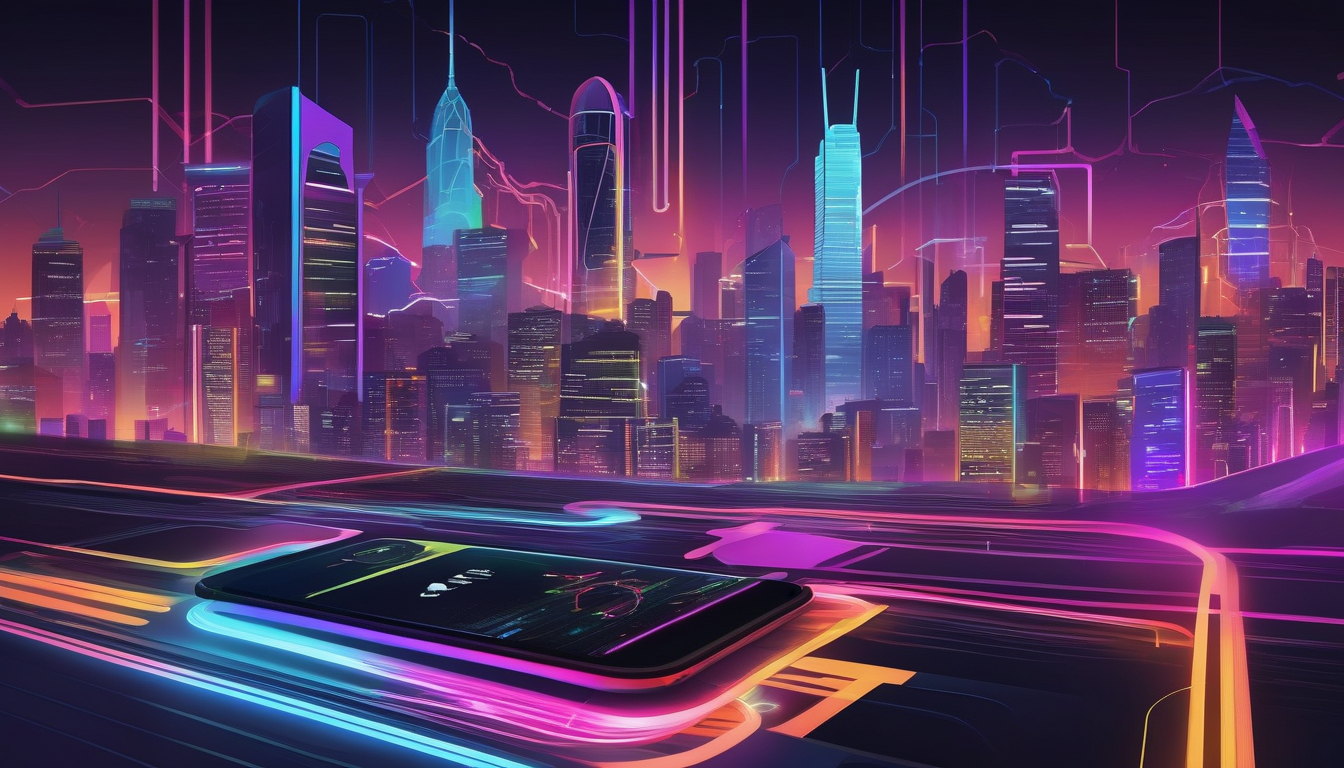
Enhanced Speed and Latency
Imagine a world where your mobile app loads faster than you can blink. With the rollout of 5G technology, this dream is becoming a reality. 5G offers lightning-fast download and upload speeds, which are significantly higher than what we experienced with 4G. In fact, 5G can provide speeds up to 10 Gbps, making it possible to download a full-length HD movie in mere seconds. This leap in speed not only enhances user satisfaction but also transforms the way we interact with our devices.
But what does this mean for latency? Latency, the delay before a transfer of data begins following an instruction, has been drastically reduced with 5G. Where 4G networks had latencies of around 50 milliseconds, 5G can reduce that to as low as 1 millisecond. This reduction is a game-changer for applications that require real-time feedback, such as gaming, video conferencing, and augmented reality. Imagine playing a multiplayer game where every move you make is instantly reflected on screen, or having a video call where the conversation flows without any awkward pauses. That’s the power of 5G!
Furthermore, the combination of enhanced speed and reduced latency opens up new possibilities for mobile applications. Developers can create more sophisticated features that rely on real-time data processing. For instance, applications in sectors like finance can provide real-time stock updates, and navigation apps can offer live traffic updates without any lag. This level of efficiency and responsiveness is crucial in today’s fast-paced world.
In summary, 5G technology is not just about faster speeds; it’s about creating a seamless experience that allows users to interact with their apps in ways that were previously unimaginable. As more users gain access to 5G networks, we can expect a wave of innovation in mobile app development that will redefine our digital experiences.
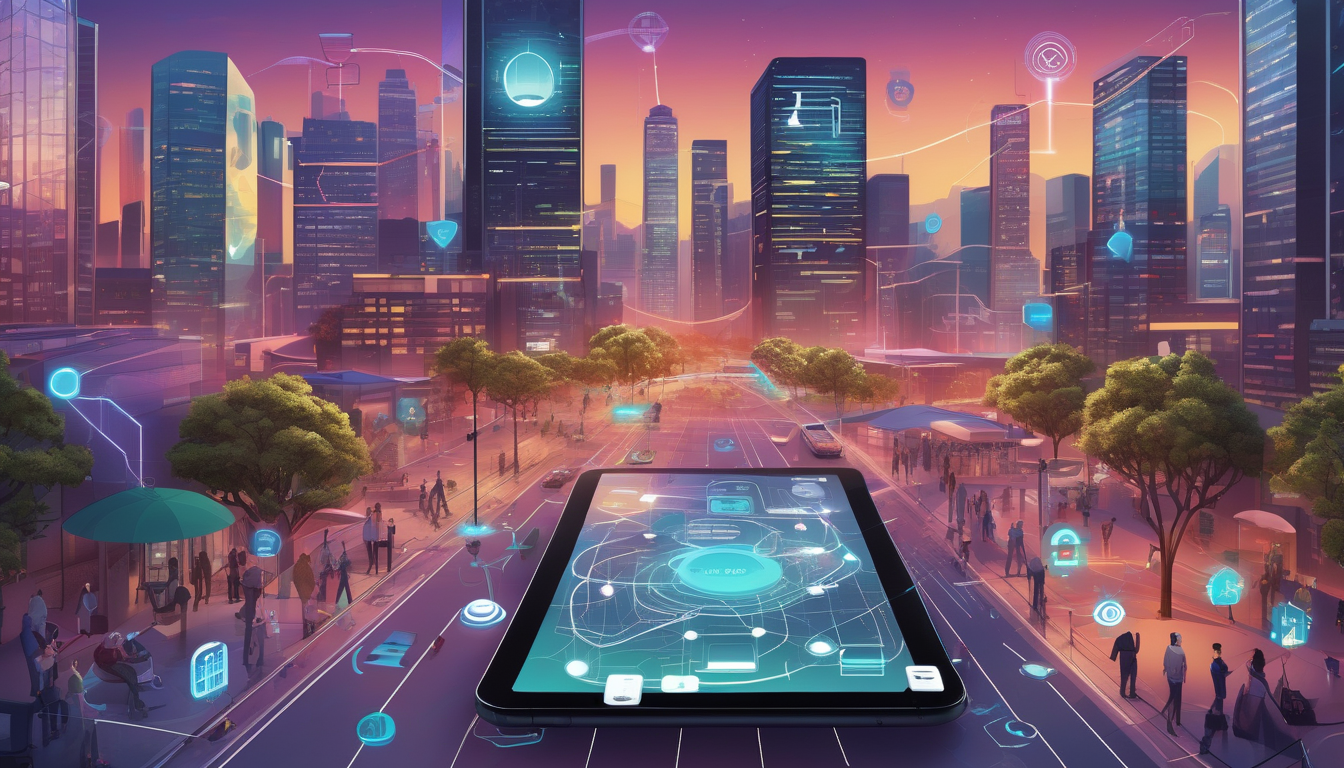
Increased Connectivity
The arrival of 5G technology is like opening the floodgates for connectivity. Imagine a world where your smartphone, smart home devices, and even your car are all seamlessly connected, communicating with each other in real-time. This is not just a dream anymore; it’s a reality brought to life by 5G. With its remarkable ability to support a staggering number of devices simultaneously, 5G is paving the way for an interconnected ecosystem that we’ve only begun to explore.
One of the most exciting aspects of increased connectivity is its impact on the Internet of Things (IoT). With 5G, the number of devices that can connect at once has skyrocketed, allowing for a more integrated experience. For instance, in a smart home setup, you could have your thermostat, lights, security cameras, and appliances all communicating with each other, optimizing energy use and enhancing security. This level of connectivity not only makes life easier but also opens doors to innovative applications that can change the way we interact with technology.
Moreover, 5G is essential for the development of smart cities. Cities are becoming more intelligent by utilizing real-time data to manage everything from traffic flow to waste management. Mobile applications are at the forefront of this transformation, enabling city planners to make informed decisions based on live data. For example, public transportation systems can adapt to real-time passenger counts, ensuring that buses and trains run more efficiently.
Here’s a quick overview of how increased connectivity through 5G is shaping various sectors:
| Sector | Impact of 5G Connectivity |
|---|---|
| Smart Homes | Seamless integration of devices for enhanced automation and security. |
| Smart Cities | Real-time data management for improved urban planning and efficiency. |
| Healthcare | Enhanced remote monitoring and telemedicine capabilities. |
| Transportation | Improved traffic management and communication between vehicles. |
In conclusion, the increased connectivity offered by 5G is not just about faster internet; it’s about creating a smarter, more efficient world. As we continue to embrace this technology, we can expect to see even more innovative applications that will redefine how we live, work, and play.
Impact on IoT Devices
The integration of 5G technology with Internet of Things (IoT) devices is nothing short of a game changer. Imagine a world where your refrigerator can communicate with your grocery store, or your car can relay real-time traffic updates to your smartphone. This is not just a dream; it’s becoming a reality thanks to the lightning-fast speeds and low latency that 5G offers. With 5G, the communication between devices is not only faster but also more reliable, allowing for seamless interactions that were previously impossible.
One of the most exciting aspects of 5G is its ability to connect a vast number of devices simultaneously. According to recent studies, 5G can support up to 1 million devices per square kilometer. This is a staggering increase compared to 4G, which could only handle a fraction of that. As a result, we are witnessing a surge in the development of smart devices that can enhance our daily lives. From smart thermostats to health-monitoring wearables, the possibilities are endless.
Moreover, the real-time data exchange that 5G enables is particularly beneficial for applications in various sectors, such as agriculture, healthcare, and urban planning. For instance, in agriculture, farmers can utilize IoT sensors to monitor soil conditions and crop health, allowing them to make informed decisions that boost productivity. In healthcare, remote monitoring devices can transmit patient data to medical professionals instantly, ensuring timely interventions.
To illustrate the impact of 5G on IoT devices, consider the following table:
| Feature | 4G Technology | 5G Technology |
|---|---|---|
| Device Connection Density | Up to 100,000 devices/km² | Up to 1,000,000 devices/km² |
| Latency | 30-50 ms | 1 ms |
| Download Speed | 100 Mbps | 1-10 Gbps |
In summary, 5G is not just enhancing the performance of IoT devices; it is fundamentally transforming how we interact with technology. As we continue to embrace this powerful technology, we can expect smarter cities, improved healthcare systems, and a more connected world where devices work together to create a more efficient and convenient lifestyle.
Smart Cities and 5G
As urban centers continue to grow, the concept of smart cities has emerged as a beacon of innovation. At the heart of this transformation lies 5G technology, which is revolutionizing how cities operate and how residents interact with their environments. Imagine a city where everything is interconnected, from traffic lights to waste management systems, all communicating seamlessly in real-time. This is not just a dream; it’s becoming a reality thanks to the lightning-fast speeds and low latency offered by 5G.
With 5G, data can be transmitted almost instantly, allowing mobile applications to gather and analyze information from various sources. For instance, consider the impact on public transportation. Mobile apps can provide real-time updates on bus and train schedules, enabling commuters to plan their journeys more efficiently. This is just one example of how 5G is enhancing urban living. The potential applications are vast and varied:
- Traffic Management: Smart traffic signals can adjust their timing based on current traffic conditions, reducing congestion and improving safety.
- Public Safety: Surveillance cameras equipped with AI can analyze footage in real-time, alerting authorities to any suspicious activity immediately.
- Energy Efficiency: Smart grids can optimize energy distribution, reducing waste and lowering costs for consumers.
Moreover, 5G facilitates enhanced communication between various IoT devices deployed throughout the city. For instance, smart waste bins can signal when they are full, allowing for more efficient collection routes. This not only saves time but also reduces emissions from waste collection vehicles. The integration of 5G into urban infrastructure is paving the way for a future where cities are not just places to live, but intelligent ecosystems that respond to the needs of their inhabitants.
In conclusion, the synergy between 5G technology and smart cities is fostering a new era of urban living. As mobile applications harness the power of 5G, they are not only improving services but also enhancing the overall quality of life for residents. The future looks bright, and with 5G at the helm, the possibilities are truly endless.
Healthcare Innovations
In the realm of healthcare, 5G technology is not just a buzzword; it’s a game changer. Imagine a world where doctors can perform remote surgeries with precision and patients can receive immediate care, all thanks to lightning-fast data speeds. This is not science fiction; it’s the reality that 5G is creating. With its ability to transmit data at unprecedented rates, 5G is enabling healthcare professionals to access critical patient information in real-time, leading to quicker decision-making and improved outcomes.
One of the most significant benefits of 5G in healthcare is its impact on telemedicine. Patients can now consult with specialists from the comfort of their homes, eliminating the need for long waits and travel. This is particularly beneficial for those living in rural areas where access to healthcare facilities is limited. With 5G, video consultations are smoother and more reliable, making it feel as if the doctor is right there in the room with the patient.
Furthermore, 5G enhances the capabilities of wearable devices and remote monitoring systems. These devices can continuously collect and transmit health data, such as heart rate and blood pressure, to healthcare providers. This real-time monitoring allows for proactive healthcare management, where potential issues can be addressed before they escalate into serious conditions. For instance:
- Wearables can alert doctors to abnormal heart rhythms.
- Patients can receive instant feedback on their health metrics.
- Chronic disease management becomes more effective through constant monitoring.
Additionally, the integration of 5G with technologies like augmented reality (AR) and virtual reality (VR) is paving the way for innovative training methods for healthcare professionals. Surgeons can practice complex procedures in a virtual environment, honing their skills without the risks associated with real-life surgeries. This not only enhances the training experience but also ultimately leads to better patient care.
As we look to the future, the potential for 5G to transform healthcare is immense. With continuous advancements and the increasing adoption of mobile apps, we can expect to see even more innovations that will redefine patient care. From improved diagnostics to enhanced treatment options, 5G is set to revolutionize the healthcare landscape, making it more efficient, accessible, and patient-centered than ever before.
Gaming and Entertainment
With the advent of 5G technology, the gaming and entertainment industry is undergoing a seismic shift, akin to upgrading from a flip phone to a smartphone. Imagine lightning-fast download speeds and virtually nonexistent latency—this is the new reality for mobile gamers and entertainment enthusiasts alike. Gone are the days of frustrating lag and buffering; instead, users can dive into their favorite games and streaming services without a hitch.
One of the most exciting aspects of 5G is its ability to support multiplayer gaming on a global scale. Players from different corners of the world can connect seamlessly, creating a truly immersive experience. Picture this: you and your friends are battling it out in a virtual arena, and with 5G, every move is executed in real-time, making the experience feel more like a live event than a simple game. This level of connectivity is not just a dream; it’s now a reality, thanks to 5G.
Additionally, the graphics quality in mobile games has reached new heights. With faster data transfer rates, developers can incorporate more intricate designs and realistic animations without compromising performance. This means that players can enjoy stunning visuals that were once reserved for console or PC gaming. The result? A gaming experience that is not only visually captivating but also engaging and addictive.
Moreover, 5G technology is paving the way for innovative entertainment options, such as cloud gaming. This allows users to play high-quality games without the need for expensive hardware. Instead of relying on a powerful console, players can stream games directly to their devices, making gaming more accessible than ever. The convenience of being able to play anywhere, anytime, is a game-changer.
In summary, the impact of 5G on gaming and entertainment is profound. It enhances user experiences by:
- Reducing latency for real-time interactions
- Improving graphics quality
- Enabling cloud gaming for broader accessibility
As we move forward, it’s clear that 5G will continue to redefine how we engage with games and entertainment, making every experience richer and more enjoyable.
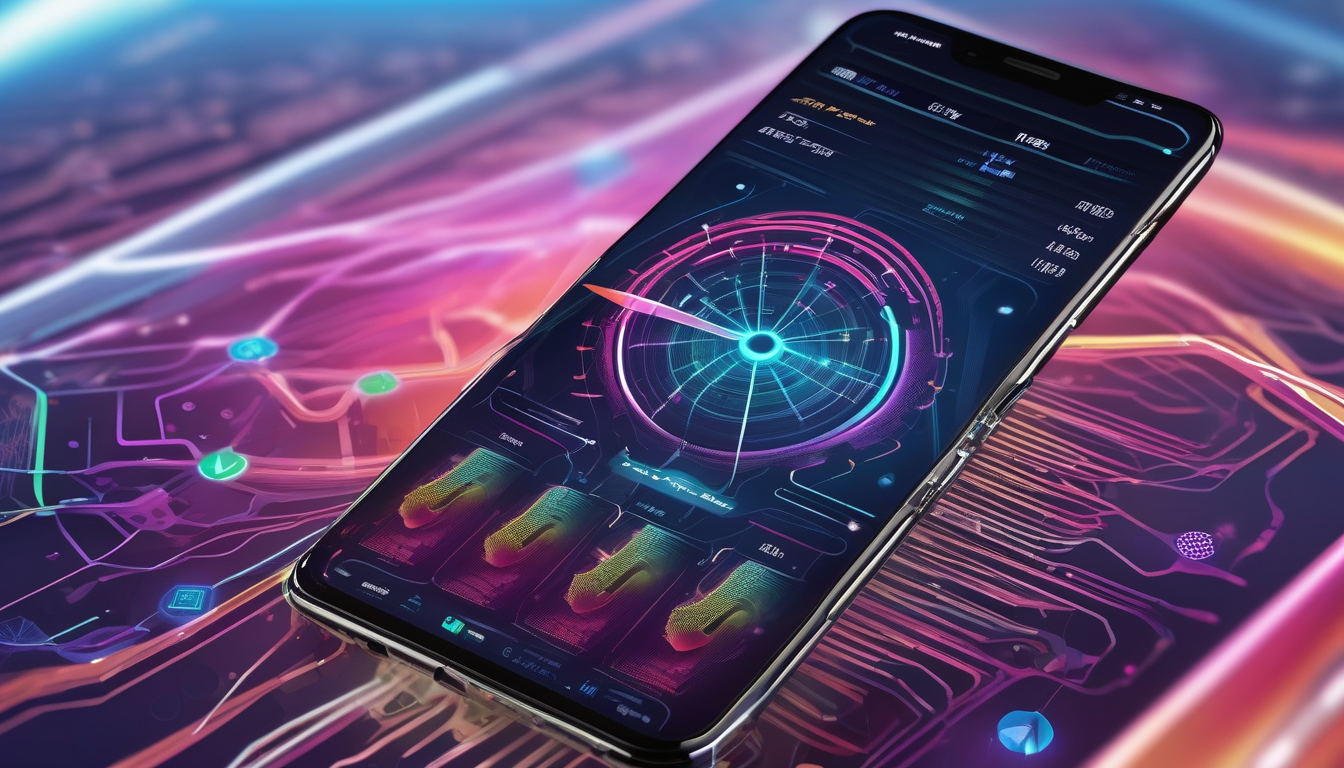
Improved User Experience
In the fast-paced world of mobile technology, 5G is a game changer. It’s not just about speed; it’s about the entire user experience. Imagine browsing your favorite app without the dreaded loading screen or buffering. With 5G, that dream is becoming a reality. The technology dramatically reduces latency, which means your commands are executed almost instantly. Whether you’re streaming a video, playing a game, or using a social media app, the interactions feel seamless and fluid.
Furthermore, 5G enhances the overall performance of mobile applications, leading to higher user satisfaction. Users are more likely to stick around when they experience smooth transitions and quick loading times. This is especially crucial for businesses that rely on customer retention. A study showed that 53% of mobile users abandon apps that take longer than three seconds to load. With 5G, those frustrating wait times are significantly reduced, keeping users engaged and happy.
Moreover, 5G allows developers to push the boundaries of what mobile apps can do. For instance, applications that require heavy data processing, such as video editing or augmented reality, can now operate more efficiently. This leads to a more robust experience, where users can enjoy high-quality graphics and immersive content without lag. Here’s a quick look at how 5G enhances various aspects of user experience:
| Aspect | Before 5G | With 5G |
|---|---|---|
| Loading Times | High latency, slow | Instant response, seamless |
| Streaming Quality | Buffering, lower resolution | High definition, no buffering |
| Gaming Experience | Lag, poor graphics | Real-time play, stunning visuals |
In conclusion, the impact of 5G on user experience cannot be overstated. It’s not just about faster downloads; it’s about creating a more engaging and satisfying experience for users. As mobile applications continue to evolve alongside this technology, we can expect even more innovations that will redefine how we interact with our devices. Are you ready for a world where your apps respond as quickly as you think?
Augmented and Virtual Reality
Imagine stepping into a world where the boundaries between the digital and physical realms blur seamlessly. 5G technology is the magic wand that is making this dream a reality, especially in the realms of Augmented Reality (AR) and Virtual Reality (VR). With its lightning-fast speeds and ultra-low latency, 5G is transforming how we interact with digital content, creating experiences that are not just immersive but also incredibly responsive.
Before 5G, using AR and VR applications often felt like trying to run a marathon in quicksand—slow, clunky, and frustrating. Now, with the power of 5G, users can enjoy real-time interactions that feel natural and fluid. For instance, in a VR gaming environment, players can move, react, and interact with the game world without any noticeable lag. This is a game-changer, quite literally!
Moreover, 5G allows for more complex and detailed graphics to be rendered in real-time. This means that developers can create richer, more engaging content that captivates users. Imagine a virtual museum where you can explore ancient artifacts in stunning detail, or an AR app that overlays digital information on your surroundings, guiding you through a city with ease. The possibilities are endless!
Here’s a quick look at how 5G enhances AR and VR experiences:
- Real-time Interaction: Users can interact with digital elements instantly, making experiences feel more lifelike.
- Higher Quality Graphics: Enhanced bandwidth allows for better resolution and detail in graphics.
- Multi-user Experiences: Multiple users can join the same virtual environment without lag, fostering social interactions.
As we look to the future, the integration of 5G in AR and VR is set to revolutionize various sectors, from education to entertainment. Imagine attending a virtual classroom where you can manipulate 3D models of the solar system or experiencing a concert from the front row, all from the comfort of your home. The impact of 5G on augmented and virtual reality is not just an upgrade; it’s a complete overhaul of how we perceive and interact with the world around us.
Future Trends in Mobile Apps
As we gaze into the crystal ball of technology, the future of mobile apps appears to be incredibly bright, especially with the ongoing evolution of 5G technology. This rapid advancement is not just about speed; it’s about unlocking new possibilities that were previously unimaginable. Imagine a world where your mobile applications are not just tools but immersive experiences that adapt to your needs in real-time. Sounds exciting, right?
One of the most significant trends we can expect is the rise of AI-driven applications. With 5G’s high-speed connectivity, apps will be able to process vast amounts of data almost instantly, enabling them to learn from user interactions and provide personalized experiences. For instance, think about a fitness app that adjusts your workout plan based on your real-time performance metrics, all thanks to seamless data transfer. This level of personalization could redefine user engagement.
Moreover, the integration of Augmented Reality (AR) and Virtual Reality (VR) will become more mainstream. 5G’s low latency will allow for smoother and more immersive experiences. Picture this: you could try on clothes virtually before making a purchase or participate in a live concert from the comfort of your home, feeling as if you are right there in the crowd. The possibilities are endless!
Additionally, as IoT devices proliferate, we will see mobile apps playing a pivotal role in managing our smart homes and cities. With 5G, these apps will communicate with multiple devices simultaneously, creating a seamless ecosystem. Imagine controlling everything from your thermostat to your refrigerator with just a few taps on your smartphone. This level of integration will not only enhance convenience but also improve energy efficiency.
Lastly, we can’t ignore the gaming industry. As mobile gaming continues to grow, 5G will enable more complex games with high-quality graphics and real-time multiplayer interactions. This means that gamers will experience less lag and more engaging gameplay, pushing the boundaries of mobile entertainment.
In conclusion, the future of mobile apps, powered by 5G, promises a landscape rich with innovation and excitement. Whether through AI, AR, IoT, or gaming, the way we interact with technology is about to undergo a dramatic transformation, making our lives not just easier but also more enjoyable.
Frequently Asked Questions
- What is 5G technology?
5G technology is the fifth generation of mobile network technology, offering significantly faster speeds, lower latency, and improved connectivity compared to its predecessors. It enables seamless communication between devices and supports a vast number of connections simultaneously.
- How does 5G improve mobile app performance?
5G enhances mobile app performance by drastically reducing loading times and enabling real-time interactions. Users experience smoother streaming, quicker downloads, and more responsive gaming, all of which lead to higher satisfaction and retention rates.
- What impact does 5G have on IoT devices?
With 5G, IoT devices can communicate more efficiently, allowing for better integration and functionality. This means smarter homes, improved healthcare monitoring, and enhanced urban management through smart city applications.
- How is 5G transforming the gaming industry?
5G is revolutionizing mobile gaming by enabling lower latency and higher-quality graphics. Gamers can enjoy seamless multiplayer experiences and immersive gameplay without the frustrating lag that was common with older network technologies.
- Are there any benefits of 5G for healthcare applications?
Absolutely! 5G is driving innovations in telemedicine, allowing for faster data transfer and real-time patient monitoring. This leads to improved patient care and better health outcomes by enabling healthcare professionals to make quicker, more informed decisions.
- What future trends can we expect with 5G in mobile apps?
As 5G technology continues to evolve, we can expect mobile apps to leverage its capabilities for even more innovative solutions. This includes advancements in augmented and virtual reality experiences, smarter IoT integrations, and enhanced user personalization.




